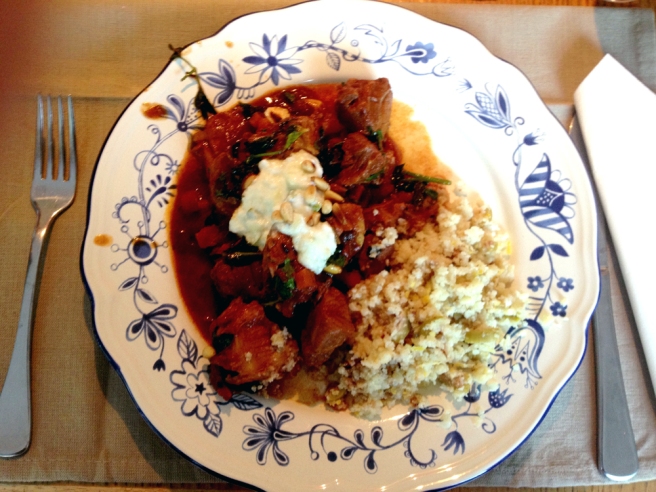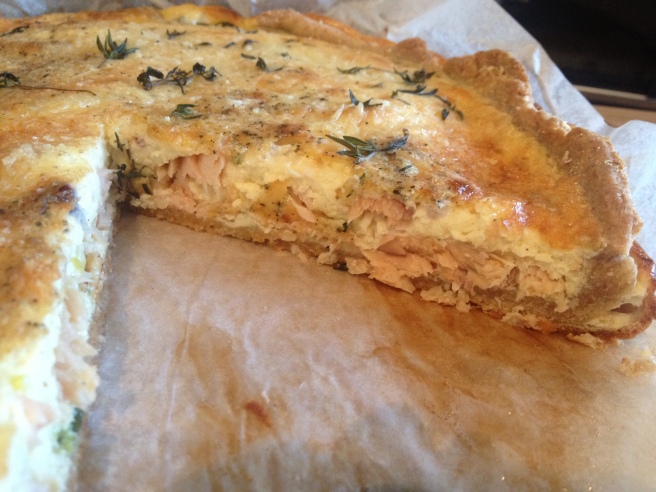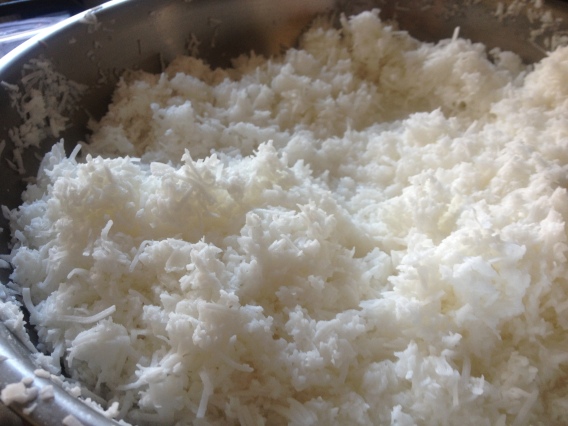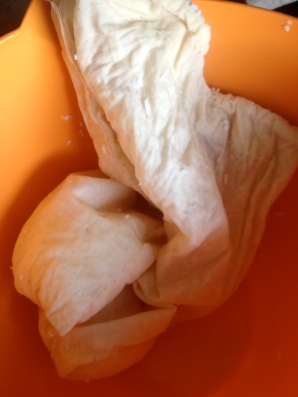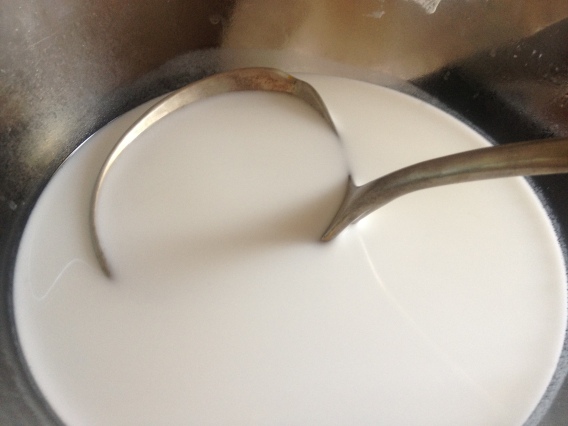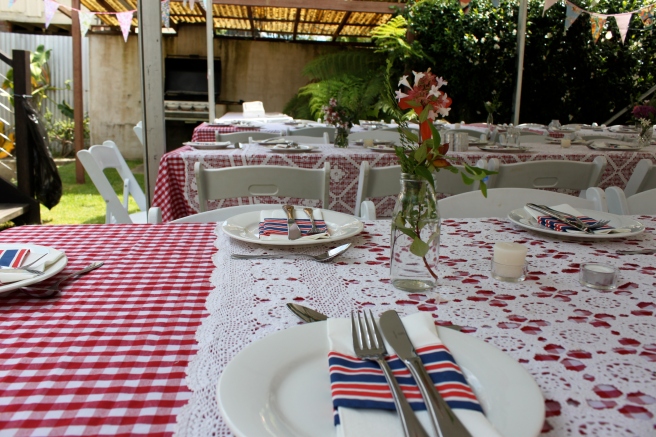Dad cooked this for dinner the other day, it was so tasty that he wanted to share it with you. He has adapted it to suit his Paleo Diet by substituting the couscous with ‘cauliflower couscous‘ and has lost about 12 kilos so it’s definitely worth a try!
Adapted from Hollick Wines
For the slow braised pork
- extra virgin olive oil
- butter
- 2 brown onions (peeled and sliced)
- 2 cloves chopped garlic
- 1 heaped dessert spoon ras el hanout spice mix
- 1 dessert spoon ground cumin
- 1 teaspoon ground tumeric
- 1 teaspoon smoked paprika
- 2 carrots (diced)
- 1 stick celery (diced)
- 12 green beans, sliced lengthways
- 1 long red chilli sliced
- 6 fresh dates, roughly chopped
- 2kg pork shoulder (cut into large cubes)
- 1 litre crushed tomato
- 1 litre chicken stock
- 2 bay leaves
- ½ bunch coriander (chopped)
- ¼ bunch basil (chopped)
- ½ bunch Italian parsley (chopped)
For the cous cous
- 1 cauliflower
- 3 cups chicken stock
- ¾ cup green olives (chopped)
- zest of half a lemon
- butter
- extra virgin olive oil
- sea salt
For the apple yoghurt
- 2 cups natural yoghurt
- 1 large granny smith apple (diced)
Method
Heat olive oil and butter in a large pot. Add the onion, garlic, ras el hanout, cumin, tumeric, smoked paprika, diced carrot, diced celery, green beans, chilli and dates. Fry until fragrant and vegetables are starting to brown.
Add the pork and stir well to ensure it is coated with the spice and vegetable mixture.
Add the crushed tomato, chicken stock and bay leaves. Bring to the boil and then reduce heat and simmer for 45-60 minutes or until pork is tender. Stir in the chopped coriander, basil and parsley just prior to serving.
To make the cauliflower cous cous. There are a few ways to cut a big head of cauliflower down to couscous size. You can go at it with a chef’s knife until the cauliflower is chopped to tiny bits or you can pulse the florets in a food processor to break them down. You can also grate the cauliflower spears on the big holes of a cheese grater.
Bring the chicken stock to the boil. Pour the chicken stock over the cous cous. Add the butter and the olive oil and cauliflower and saute for a few minutes until just cooked.
Add the lemon zest and green olives. Stir well and taste. Season with sea salt if necessary. Set aside and reheat before serving.
For the apple yoghurt. Combine the yoghurt and diced apple. Mix well.
To serve. Serve the slow braised pork accompanied by the green olive and lemon cous cous, a generous dollop of the apple yoghurt and a sprinkle of toasted almonds
Enjoy with a glass of Hollick Tempranillo (of course)
